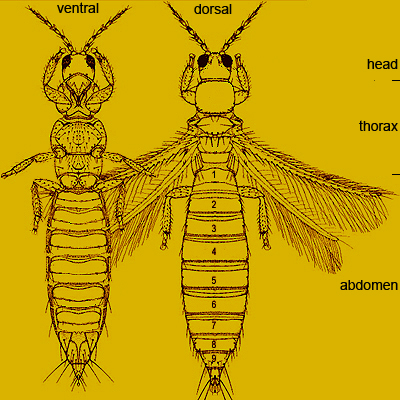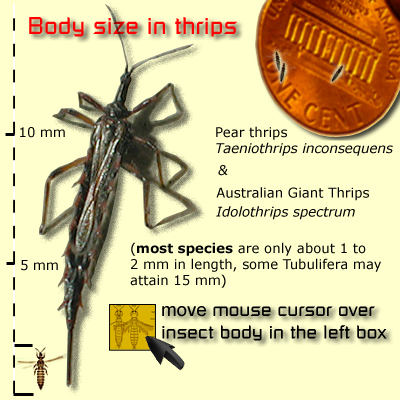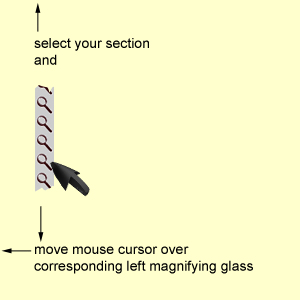| Particular attention is given to key characters, because it is essential that they be interpreted correctly. You can use additional photographs within the key when you are unsure of the character state discussed in the text. A double click on the character state thumbnail opens the related character state photograph and the mouse cursor will surround the important specific character state. | ||

|
 |
|
| (antecosta-campaniform sensilla)
-> (cilia-craspedum) -> (cross
vein-furca) ->(gena-maxillary stylets)
-> (maxillary palps-ocellar setae) -> (ocellar triangle-posteroangular) -> (posteromarginal-setae) -> (spine-wing retaining setae) |
|
CILIA:
Fringes or slender hair-like processes around the margins of the wings
(Terebrantia: with 8-shaped socket cells, Tubulifera: without socket
cells, fringes arise between the membrane layers of the wings. |
 |
CLAVUS: Lobed
area at the posterior base of the forewing. |
||
CLYPEOFRONS:
An unpaired ventrocranial head sclerite. The Clypeus consists of two
parts: membraneous anteclypeus and the clypeus, which is fused with
the frons, which is delimited by clypeus, inner margin of the compound
eyes and cranial region of the vertex. |
||
COMB: A row of
closely spaced and slender microtrichia on the posterior margin of
tergite VIII. |
||
COMPOUND EYES: The
compound eyes consist of an aggregation of a variable number of ommatidia. |
||
COSTA:
A thickened anterior longitudinal margin of the forewing. |
||
COSTAL
VEIN: Most anterior longitudinal vein of the forewing. |
||
COSTAL
CILIA: Cilia along the anterior margin of the forewing. |
||
COXA:
Basal segment of an insect leg. |
||
CRASPEDUM:
Thin sclerotized lobes on the posterior margin of abdominal tergites. |
Gordh, G & Headrick,
D (2001): A dictionary of Entomology. CABI Publishing, Oxon & New
York, 1032 pp. |
Gullan, PJ & Cranston,
PS (1994): The Insects: An Outline of Entomology . Chapman
and Hall, London. 491 pp. |